Boston Fern Care: Complete Guide To Growing Boston Ferns
It may be popular, but how much do you really know about this ubiquitous houseplant? Our expert guide to Boston fern care shows you how to cultivate the best

As all houseplant lovers will know, the right Boston fern care is a delicate balancing act. Truth be told, these tender ferns can be a bit finicky. Popularized during the Victorian Age, the Boston fern plant (Nephrolepis exaltata) is still commonplace on Southern porches and as an indoor plant. But what works naturally in one household might fall short in another.
Caring for Boston ferns is a commitment, since they require consistent moist soil, bright light and high humidity. Learning how to care for a Boston fern isn't difficult, but it is specific. Growing ferns indoors requires ongoing attention – but it is well worth your time. Here, we outline everything you need to ensure yours are happy and beautiful.
Quick Boston Fern Facts:
- Botanical name: Nephrolepis exaltata
- Height: 2-3 feet (61-91cm)
- Spread: 2-3 feet (61-91cm)
- Sun exposure: Partial shade
- Soil requirements: Well-draining yet moisture retaining or soilless
- Hardiness zones: USDA 10-12
- When to plant: Spring
The Anatomy of Boston Ferns
The best care of Boston ferns relies on understanding a little of their origins, characteristics and native preferences. Also known as the sword fern, Boston fern plants are native to the tropical, moist forests of South America through Mexico, Florida and the West Indies, where this fern reaches 7ft (2m) high. An evergreen, Boston fern has sword shaped, slightly toothed fronds which arch upwards. Other cultivars have twisted, drooping, curly or wavy fronds, but the most common is ‘Bostoniensis’ with its upright spreading habit of 3ft (90cm).
While most ferns are propagated by spores, the Boston fern is considered to be sterile. Instead of spores, it propagates through slender stolons that dangle from the plant. When the stolons touch the soil, a new plant forms. The genus name hails from the Greek ‘nephros’ (kidney) and ‘lepis’ (scale). Its common name is in reference to its discovery as a natural variant in a large shipment of ferns sent from Philadelphia to Boston.
Boston Fern Care
As mentioned, caring for a Boston fern requires commitment and consistency. These lovely ferns look gorgeous on the porches of Southern homes, but when winter strikes they die back and become less than attractive. So how do you keep them lush and green?
- Lighting Conditions:Ferns, including the Boston fern, are understory plants. Basically, this means that these plants thrive in partial shade.
- Best Watering:Boston ferns need consistently moist but not sodden soil. If you are allowing a Boston fern to go dormant, reduce the amount of water given and allow the soil to go fairly dry. Resume your regular watering schedule in the early spring.
- Temperature and Humidity:Boston ferns require high humidity and warm temperatures. To provide them with plenty of humidity, place near the bathroom or kitchen inside or pot them outside. To double pot, place the container with the fern inside a larger pot lined with moist sphagnum moss. To raise humidity, you can place the container-grown fern on a sauce layered with pebbles. Maintain night temperatures of 65°F (18°C). During the day, make sure the plant doesn’t exceed 95°F (358°C).
- Soil and Compost:Boston ferns need a well-draining yet water-retentive soil. Alternatively, you can use a soilless medium such as peat and vermiculite.
- Fertilizing Needs:Boston ferns prefer rich soil or regular fertilization. For the best Boston fern care, apply a slow-release or liquid houseplant fertilizer at half strength every four-six weeks during the growing season. Stop feeding in winter.
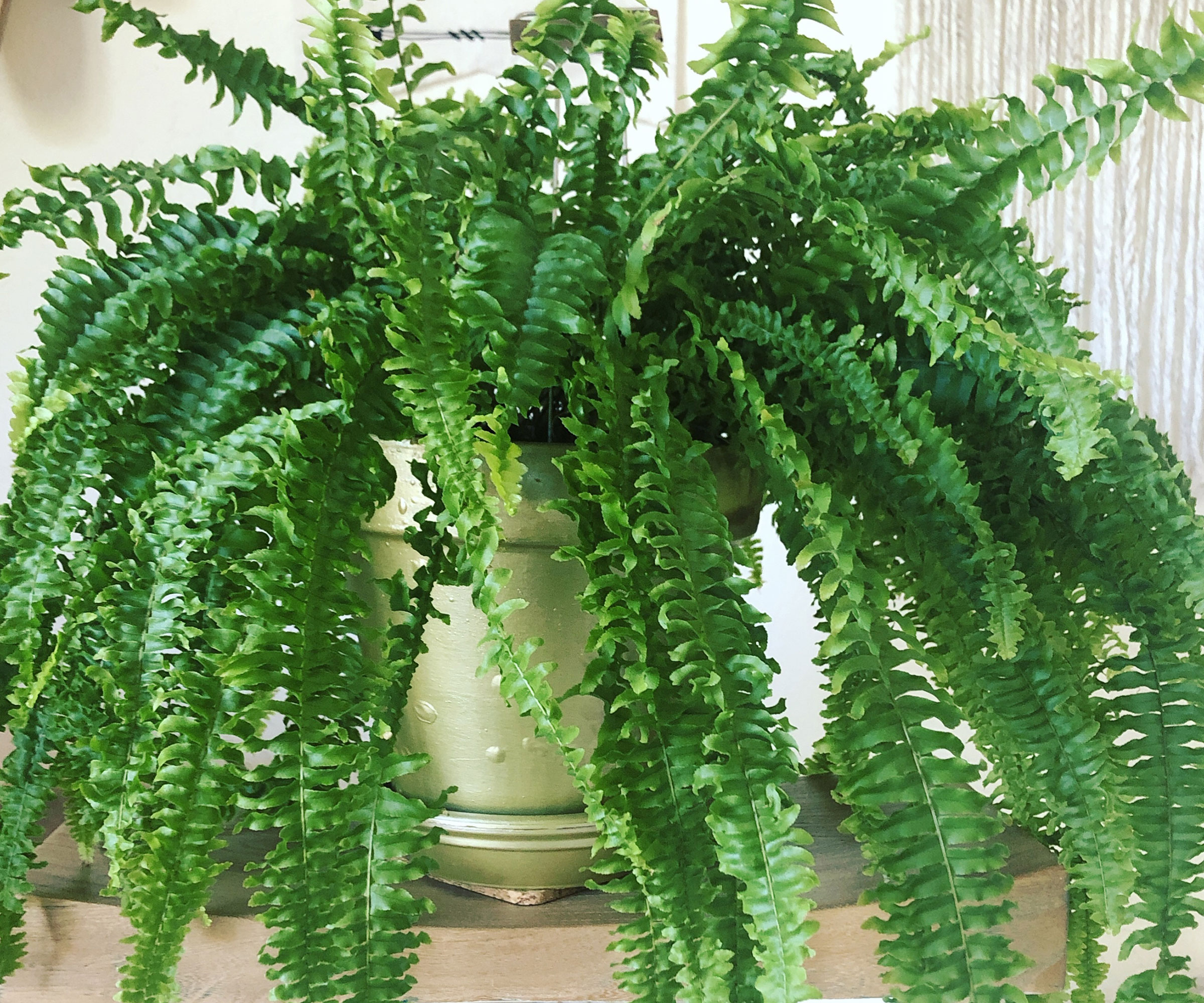
Pruning Boston Ferns
When it comes to pruning Boston ferns, you’ll find that it helps to be observant. Pruning is not necessary during the growing season, except to remove any dead fronds. Once winter arrives and colder temps, Boston ferns will likely begin to lose foliage, even when moved indoors.
You can prune the plant at this time and allow it to go dormant, or wait to prune it in the spring, just before new leaves appear. Prune the plant all the way down to the crown using clean shears.
Gardening tips, videos, info and more delivered right to your inbox!
Sign up for the Gardening Know How newsletter today and receive a free copy of our e-book "How to Grow Delicious Tomatoes".
Repotting Boston Ferns
For the best care of Boston ferns, you’ll find it pays to keep an eye on how well they are doing inside their containers. Boston ferns can be repotted when they have outgrown their container. However, it might be better to divide the plant, depending on the size of the fern. This way, you get new ferns and the parent fern won’t get so large that it becomes unmanageable.
Divide Boston ferns in the late winter or early spring, before new foliage appears. Cut through the root ball with a clean, sharp knife, either in halves or quarters. Be sure to keep plenty of leaves on each division.
Problems, Pests & Diseases
If the growing conditions of Boston fern aren’t met or temperatures drop, the plant tends to drop leaves. This may make the plant look unsightly. Boston ferns are also susceptible to fungus gnats, mealybugs, scales, slugs, thrips and white flies.
While pesticides may be used to reduce infestations, care should be taken. Be sure the pot has excellent drainage and no saucer is attached, lest phototoxicity result. A better control is to use soil drenches with an insecticide. As far as diseases go, Boston ferns are prone to fungal diseases. Keeping the plant moist (but not sodden) is the best way to control fungal disease and maintain the best Boston fern care.
Overwintering Boston Ferns
Glorious, full Boston ferns of summer might begin to look scraggly as temperatures dip in the approach to winter. For the best care of Boston fern, you will need to overwinter it. Move it into a cool room of 50-55°F (10-13°C) with a south-facing window. Reduce watering and allow the plant to go into dormancy.
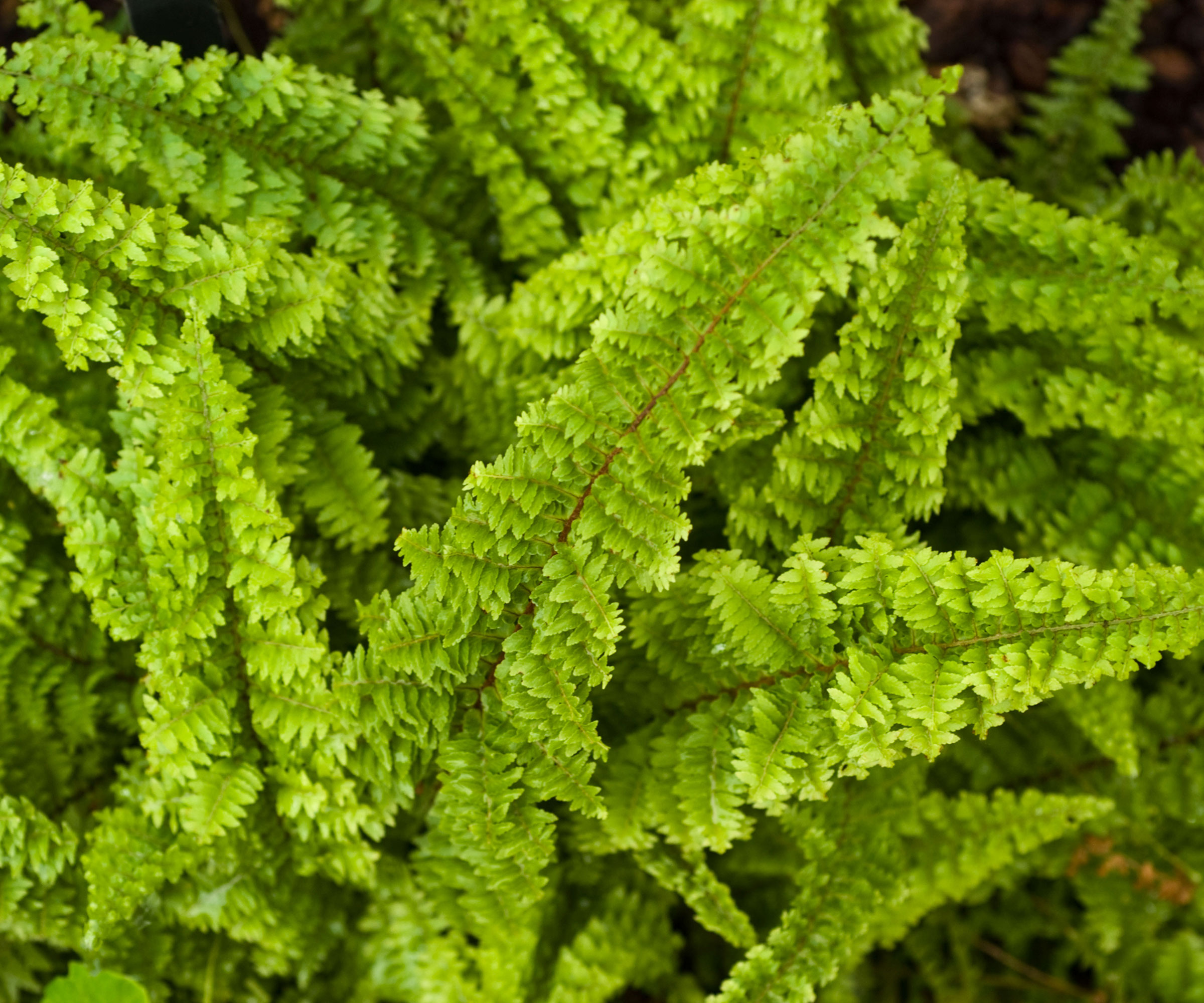
Best Boston Fern Varieties
While ‘Bostoniensis’ is the most common variety of Boston fern, there are quite a few others to choose from. Once you have mastered better Boston fern care, it’s well worth expanding your collection with one or two of these bushy beauties:
- Compacts’ is shorter and more compact and upright than ‘Bostoniensis’.
- ‘Dallas’ is also a smaller cultivar that is tolerant of lower light levels and less humidity.
- ‘Florida Ruffle’ is medium sized with ruffled leaflets.
- ‘Fluffy Duffy’ has feathery fronds that divide two-three times, forming a dense, small fern.
- ‘Fluffy Ruffles’ has thick wavy leaflets. A smaller plant, it is sterile.
- ‘Golden Boston’ fern has lovely yellow and green leaves.
- ‘Massii’ is like ‘Bostoniensis’ but darker green with drooping fronds.
- ‘Rita’s Gold’ is a compact fern with chartreuse leaves.
- ‘Verona’ is an heirloom with pendulous, lacy fronds.
- ‘Whitmanii’ has serrated feathery leaves. It tolerates a lower humidity.
Frequently Answered Questions
Are Boston Ferns Toxic to Cats and Dogs?
Cats and dogs (especially cats) are going to love to investigate your Boston fern. Be assured, these plants are not toxic to your pets. Of course, you may wish to elevate your ferns so they don’t get overly investigated by your feline friends.

Amy Grant has been gardening for 30 years and writing for 15. A professional chef and caterer, Amy's area of expertise is culinary gardening.
- Amy DraissDigital Community Manager
- Heather RhoadesFounder of Gardening Know How
-
 Terrifically Tubular Flowers For Hummingbirds: 9 Tube-Flowered Plants To Attract Hummers
Terrifically Tubular Flowers For Hummingbirds: 9 Tube-Flowered Plants To Attract HummersGrowing tubular flowers for hummingbirds helps you create the optimum feeding conditions for your winged friends. Here are nine tubed delights for hummers
By Tonya Barnett
-
 How To Grow Hydroponic Tomatoes For Fresh Indoor Harvests – No Soil Required
How To Grow Hydroponic Tomatoes For Fresh Indoor Harvests – No Soil RequiredLearning how to grow tomatoes in water is easy and allows you to harvest fresh-home-grown produce in every season without any mess.
By Ellen Wells
-
 Best Spider Plant Soil – Complete Soil Guide And Expert Tips For Keeping Plants Happy
Best Spider Plant Soil – Complete Soil Guide And Expert Tips For Keeping Plants HappySpider plants are fun and easy plants to grow, but what is the best soil for a spider plant? Selecting the right soil is important so they can thrive.
By Bonnie L. Grant
-
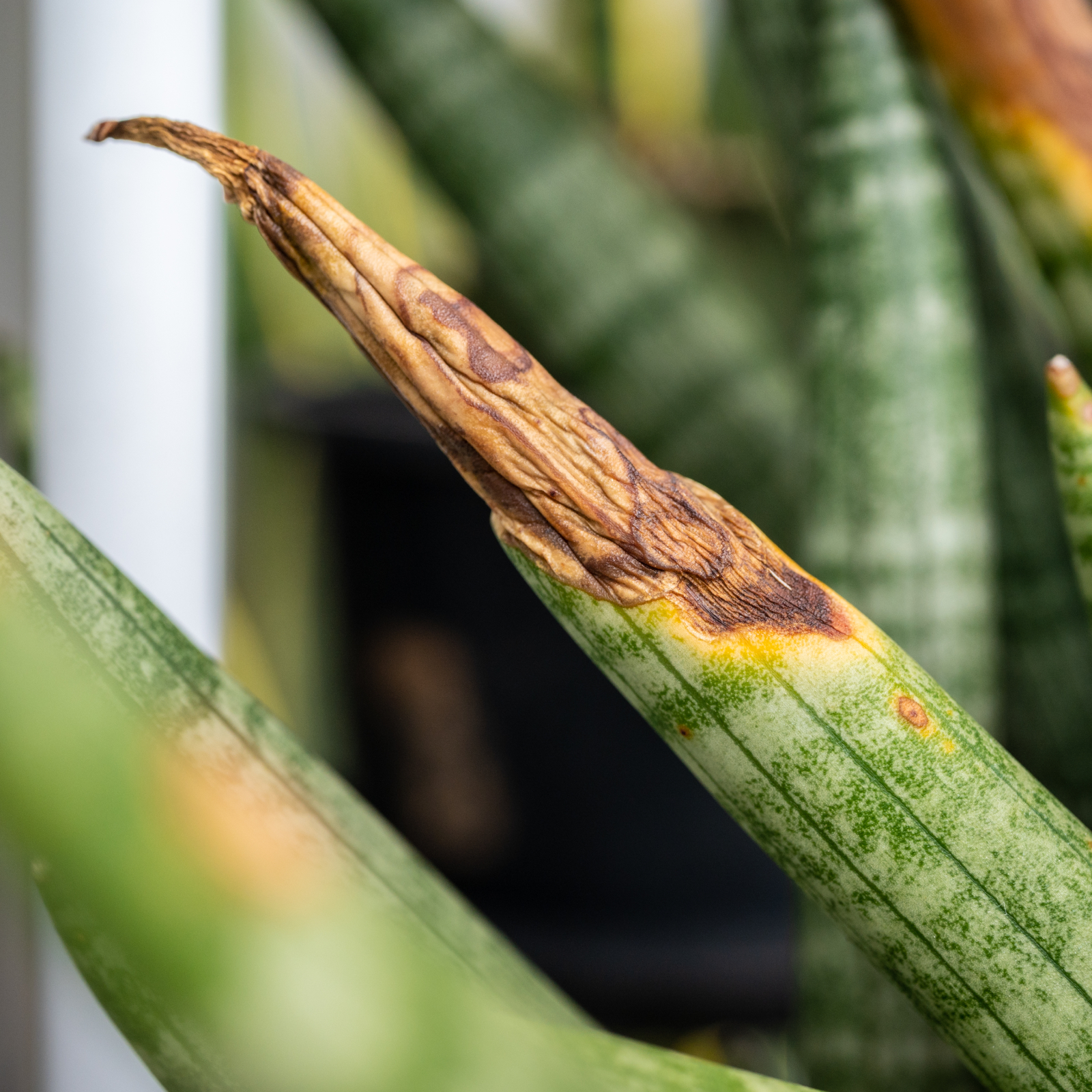 Help, My Snake Plant Is Mushy! Advice For Root Rot In Snake Plants
Help, My Snake Plant Is Mushy! Advice For Root Rot In Snake PlantsSnake plants are hardy houseplants, but they can be susceptible to root rot. Learn how to prevent and treat this common snake plant problem.
By Amy Grant
-
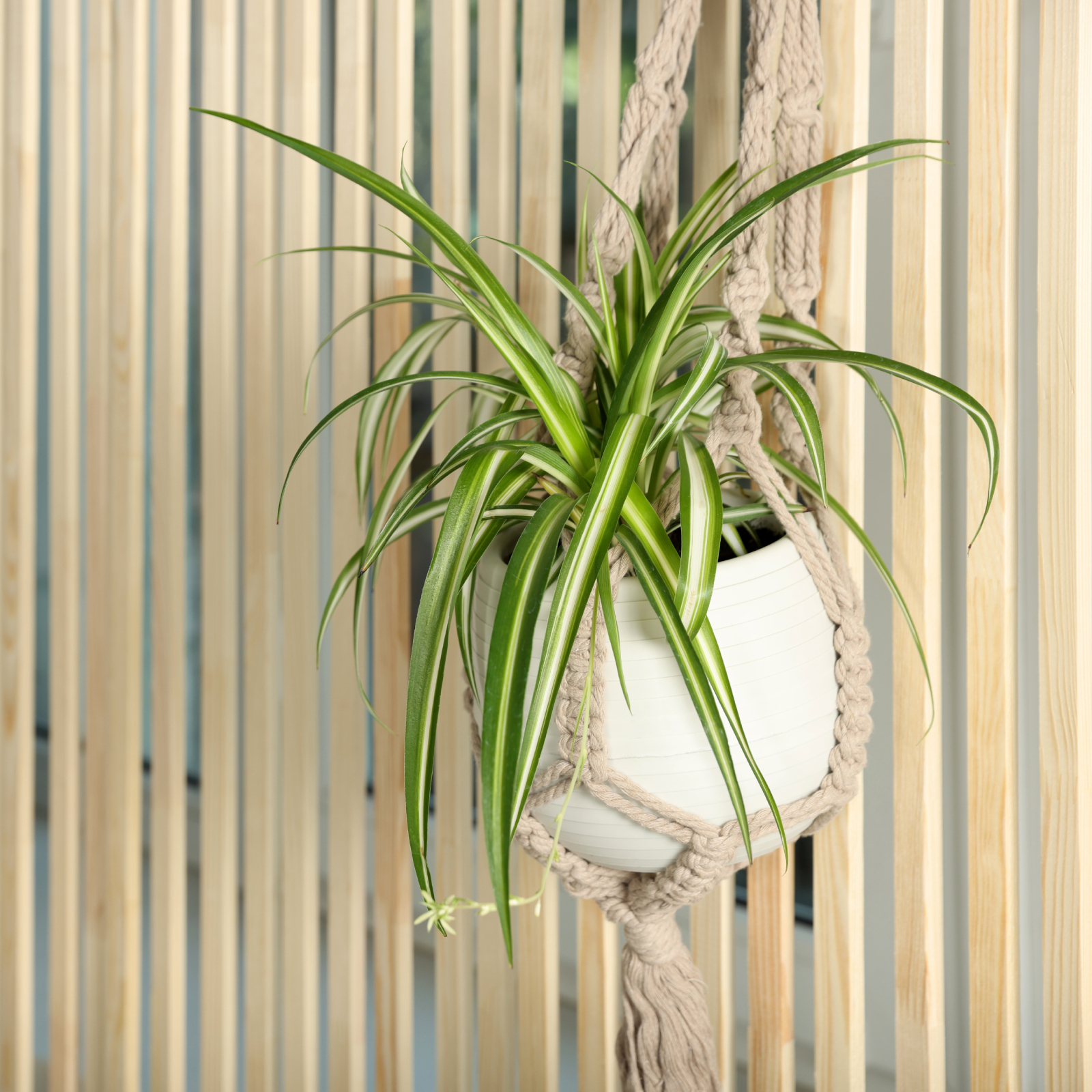 How To Grow A Hanging Spider Plant – For An Elegant Indoor Or Outdoor Display
How To Grow A Hanging Spider Plant – For An Elegant Indoor Or Outdoor DisplayOf all the beautiful baskets we see, the hanging spider plant is probably the easiest to grow. Let your hanging basket spill over with little spider plantlets!
By Teo Spengler
-
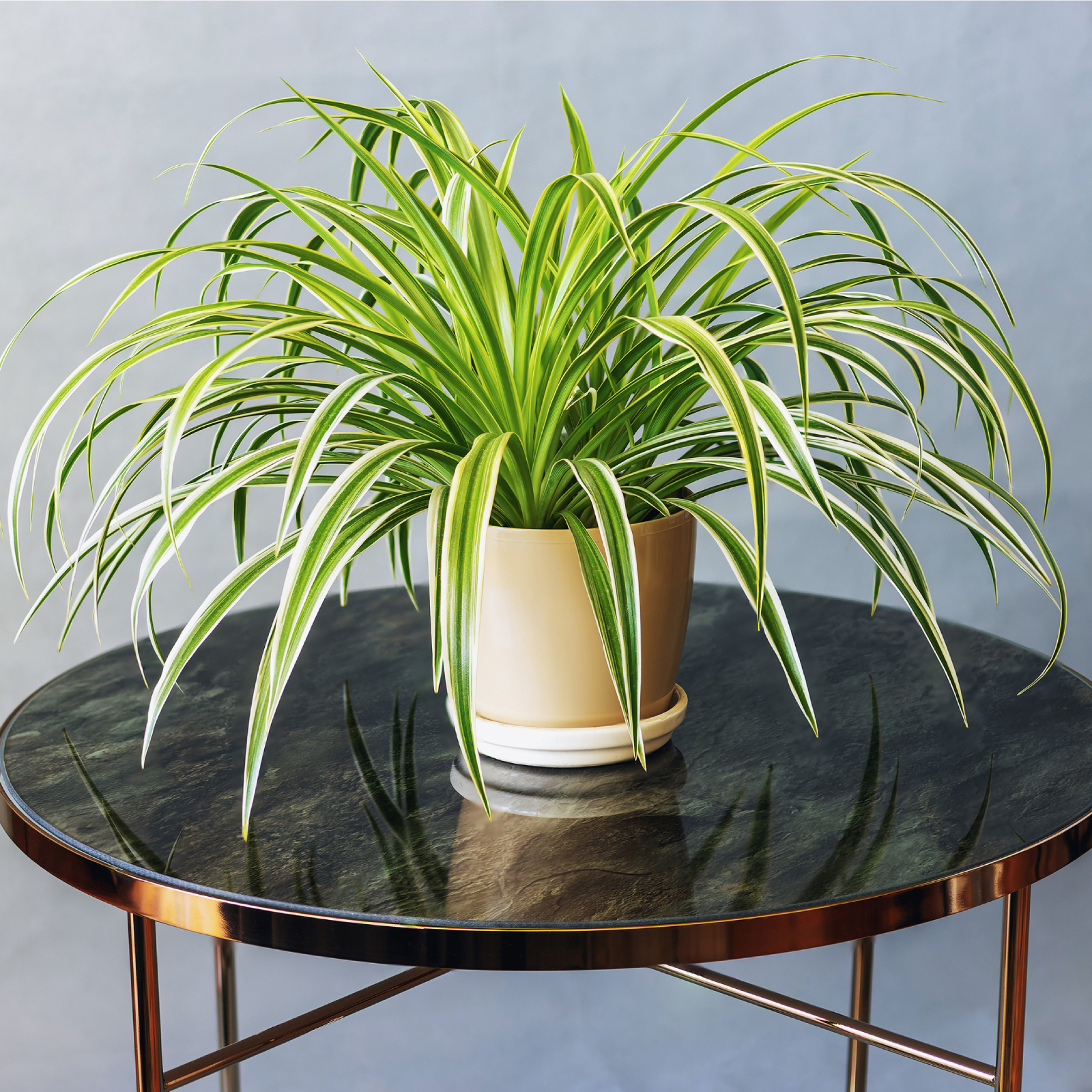 How To Care For A Variegated Spider Plant – Plus, Unique Varieties To Try
How To Care For A Variegated Spider Plant – Plus, Unique Varieties To TryVariegated spider plants and their streaks of green and cream tones bring interest and light to an indoor room, and will elevate your houseplant collection.
By Teo Spengler
-
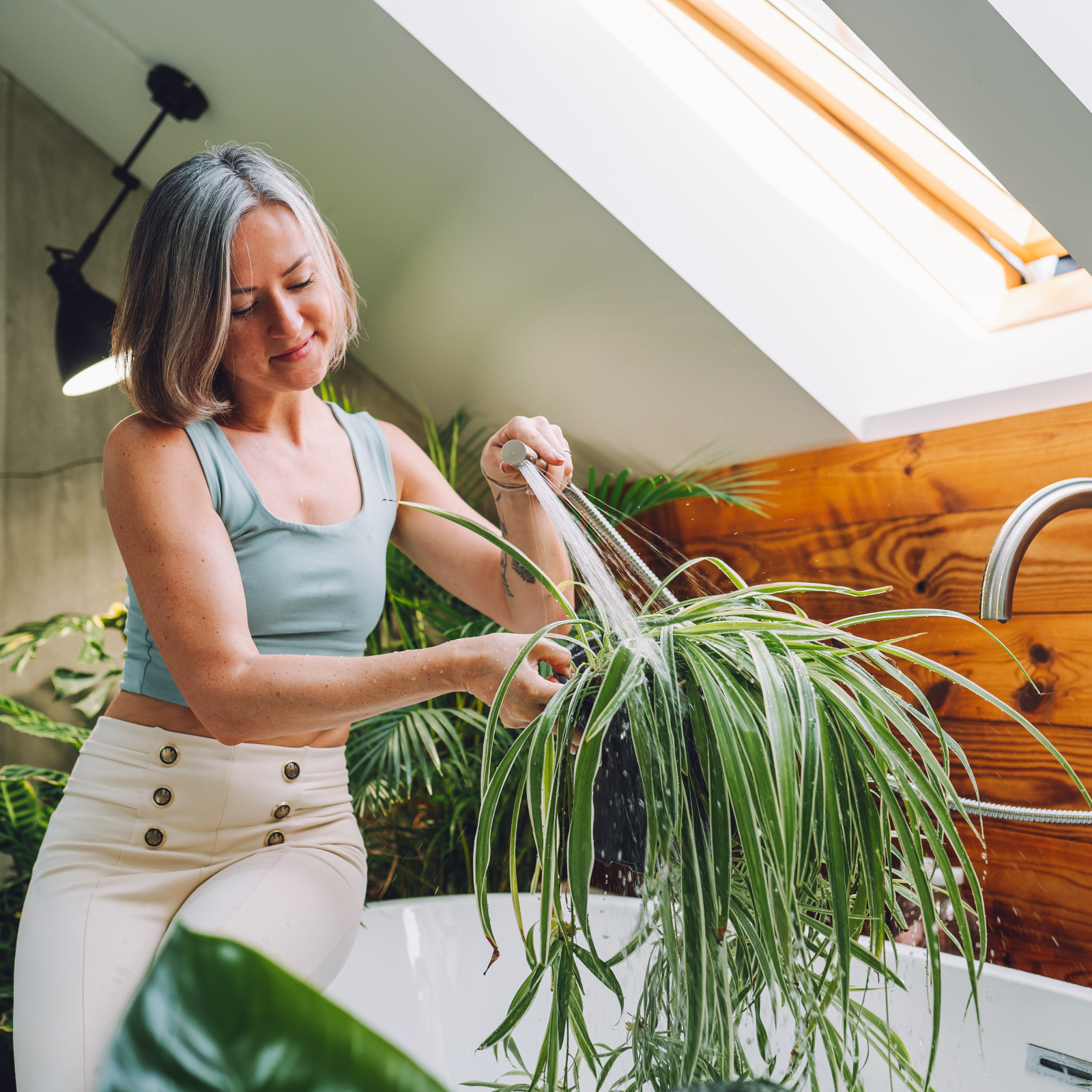 How Often Should You Water A Spider Plant? Tips To Keep Spider Plants Happy And Healthy
How Often Should You Water A Spider Plant? Tips To Keep Spider Plants Happy And HealthySpider plants are hardy and easy to grow, but they do need proper watering to thrive. Read our tips on how often to water your spider plants.
By Amy Grant
-
 Snake Plant Getting Enough Light? Understanding Light Requirements And How To Adjust
Snake Plant Getting Enough Light? Understanding Light Requirements And How To AdjustSnake plant light requirements aren’t as stringent as for some houseplants, but the right lighting is important for their growth and well-being.
By Tonya Barnett
-
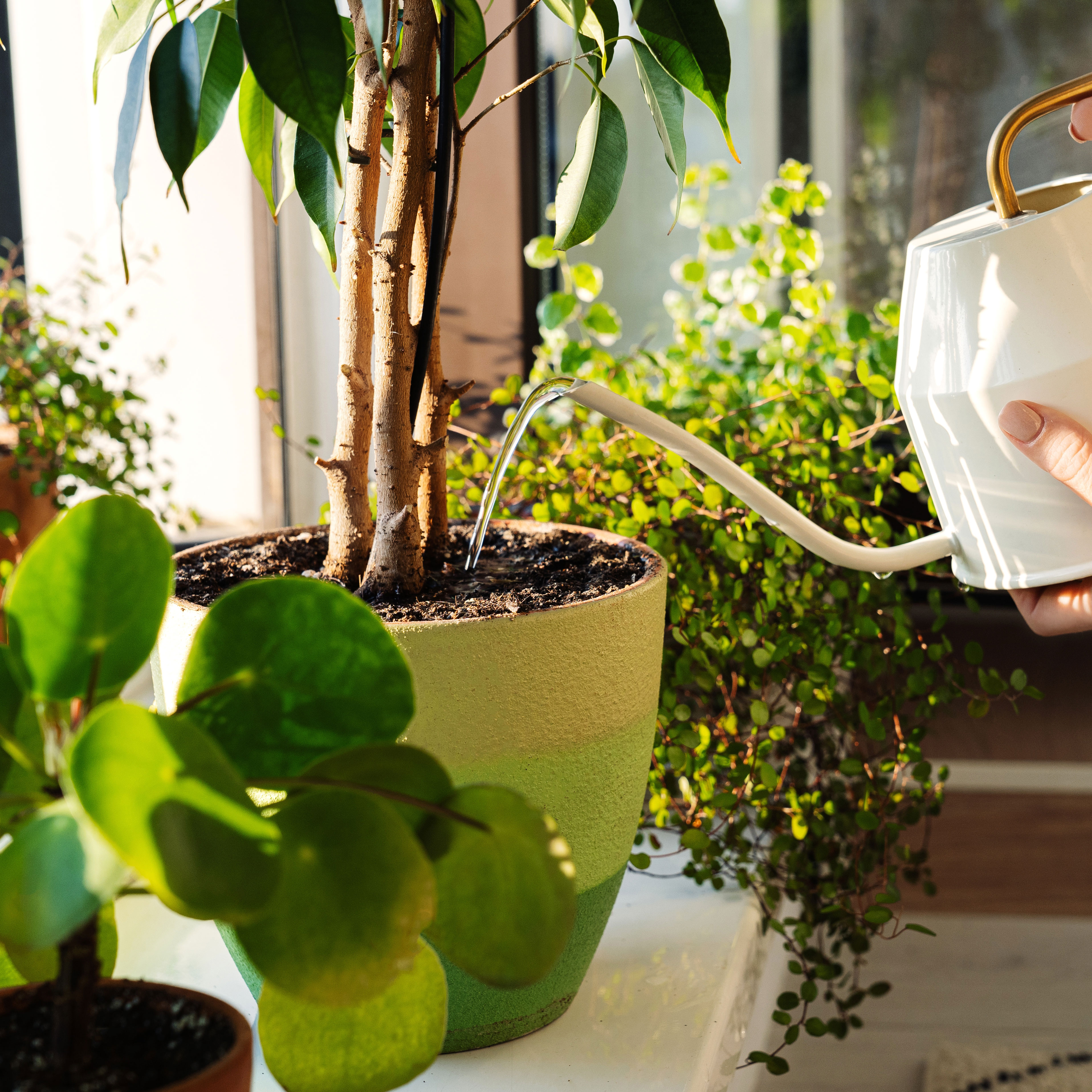 Feeding Houseplants: How And When To Fertilize Indoor Plants Like A Pro!
Feeding Houseplants: How And When To Fertilize Indoor Plants Like A Pro!Container-based houseplants have specific feeding needs over and above plants grown in the ground. Here’s how and when to fertilize indoor plants the right way
By Bonnie L. Grant
-
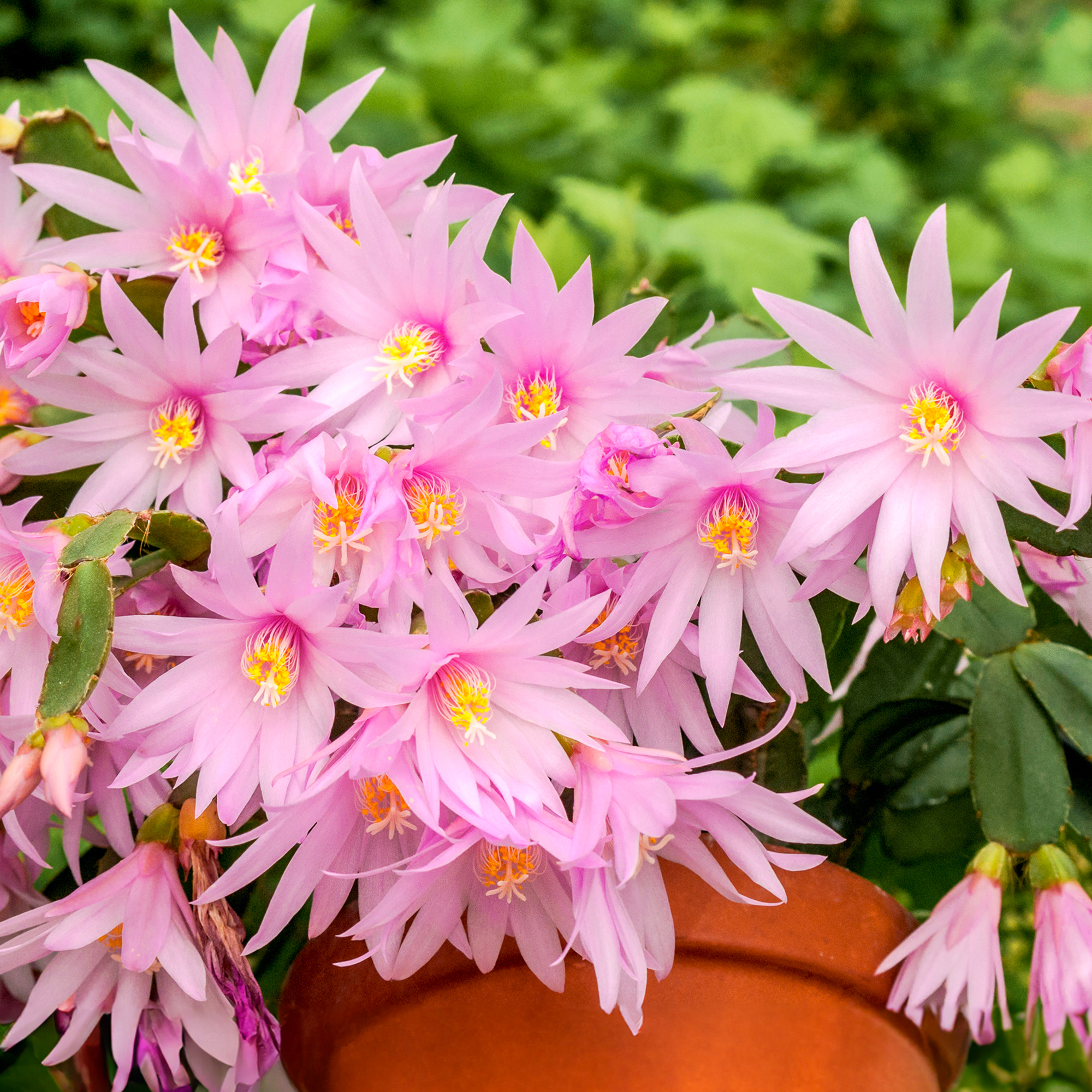 How To Get An Easter Cactus To Bloom Every Year: Expert Tips For Stunning Spring Flowers
How To Get An Easter Cactus To Bloom Every Year: Expert Tips For Stunning Spring FlowersDiscover the secrets to vibrant Easter cactus flowers and follow these key steps to ensure spectacular blooms just in time for spring.
By Melanie Griffiths